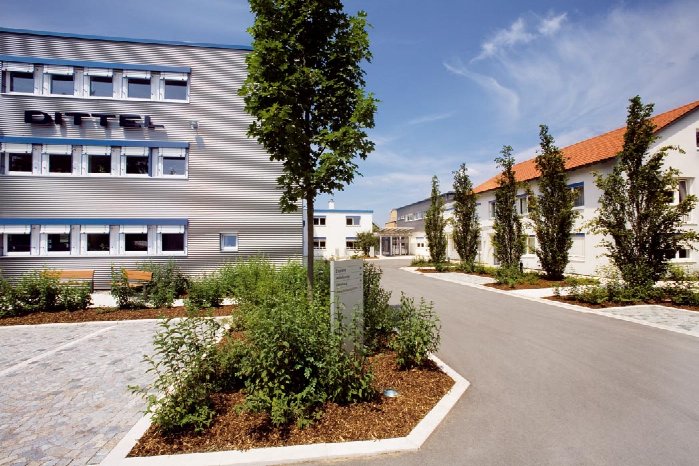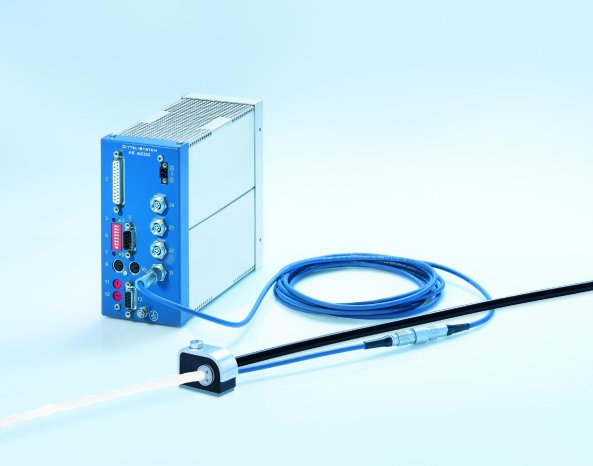The AE fluid sensor works on the principle of sound wave transmission through a stream of fluid. The sensor unit is very compact and robust, and combines the advantages of both the rotating and the static AE sensors. This development has led to a sensor that can detect acoustic emissions directly from the machining process, opening up a wide range of completely new monitoring opportunities that the current range of AE sensors was not capable of. The sound waves are transmitted through a fluid that has always been present in the machine tool: the cooling lubricant – either a water-based coolant emulsion or a so-called grinding oil. The latter is often used in high power grinding processes involving hard, brittle materials. In terms of wetting, grinding oil is the optimal choice for the generally dirty or oily, rotating metal surfaces and guarantees an ideal link between the sound waves and the sensor. The stream can therefore be directed straight into the cutting process, to the tool, the workpiece or the clamping device. A wide frequency range of acoustic emissions produced by various machining processes can be measured reproducibly and highly dynamically.
The coolant is fed to the AE fluid sensor via a three meter long, non-buckling polyurethane pipe that is resistant to most of the coolants in common industrial use and can be flexibly led in and around the machine tool. The issue of joint damping, e.g. in the head stock, that arises when performing measurements with standard AE sensors is not a problem when this method is applied. By electrically and acoustically isolating the AE fluid sensor from the machine tool, the internal and background noise is effectively suppressed, making it possible to measure even the slightest acoustic emission signals. When working with direct drive spindles, the associated electromagnetic interference makes the desired AE signal virtually unrecognizable to conventional AE sensors. With the AE fluid sensor, on the other hand, the process can be monitored with far greater certainty.
Coolant pressure and flow rate are set with the aid of a pressure regulator, depending on the position and distance of the AE fluid sensor relative to the AE source in the cutting process. The maximum length of the measuring stream and the related distance between the AE fluid sensor and the AE source depend on fluid viscosity. When using grinding oil and a vertical stream, the distance between sensor and source ranges from a few millimeters to several centimeters. Where space is of a prime, one can increase the distance and assemble the system further away from the AE source.
The integrated signal processing electronics in the AE fluid sensor can send the measured data to any one of DITTEL’s AE evaluation systems. It is also relatively easy to retrofit the AE fluid sensor into existing systems without having to make major changes to the machine tool or spindle.


